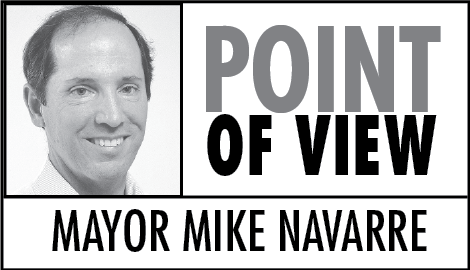Announcement of the annual Permanent Fund dividend is one of Alaskans’ most anticipated events of the year. Dividends are clearly important to Alaska residents and also have a significant and positive effect on our economy.
This year’s record $2,072 dividend comes at the same time as Alaska faces its largest budget shortfall in history. Maybe there’s is a better way to balance the two.
First, as we celebrate and recognize Dividend Day, let’s try a little quiz:
1. True or false: Permanent Fund dividends are guaranteed in the Alaska Constitution.
False. The individual dividend is not guaranteed by the constitution; in fact, there is no guarantee that a dividend be paid every year.
2. True or false: The Legislature can spend earnings from Permanent Fund investments.
True. The legislature has always had the authority to spend the fund’s earnings. What it can’t touch is the principal; that’s the annual deposits of oil and gas royalties and other designated revenues that have accumulated over the years as mandated in the voter-approved 1976 constitutional amendment establishing the Permanent Fund.
Additionally, deposits to the principal for inflation proofing and other special legislative appropriations are also constitutionally protected. The annual earnings can be used in the state budget, but that’s never happened on a large scale. The earnings are primarily used to pay the much-loved dividends to Alaskans. In fact, the dividend payments are the largest single expenditure in this year’s state budget. Yes, even more than K-12 education funding.
3. True or false: The ultimate purpose of the Permanent Fund is spelled out clearly in the Alaska Constitution.
False. The constitution dictates only what oil and gas royalty revenues must be deposited into the fund and prohibits spending the principal. The constitution does say income from the fund’s investments “shall be deposited in the general fund unless otherwise provided by law,” meaning they are just like all other funds in the state treasury and available for expenditure at the discretion of the legislature.
The motivation to create the Permanent Fund arose after the state spent $900 million from Alaska’s first big lease sale at Prudhoe Bay in 1969. The money wasn’t frittered away — it was spent on needed capital projects and programs such as the new Alaska Student Loan program and Alaska Longevity Bonus Program. Alaskans, including Gov. Jay Hammond and legislators, realized that the temptation to spend every penny of future oil and gas revenue would be too powerful to resist. The answer was to set aside a portion for future needs.
The premise was to turn non-renewable oil and gas wealth into a renewable source of investment earnings. To save for the future; a wise move.
Supporters of the constitutional amendment argued the fund would generate investment income to help meet the state’s needs and provide public services when oil revenues could no longer carry the load. They argued that directing a portion of the anticipated oil wealth into a protected savings account would reduce the temptation to overspend. Also a wise move.
Today, with North Slope oil production down three-quarters from its peak in 1988, it’s time Alaskans look at the original intent of the Permanent Fund and make responsible decisions about how it should be used to help pay for the public services needed for the state and its residents to thrive in the years ahead.
Years of falling oil production, painfully low oil prices and state spending — even with this year’s substantial budget cuts — already have emptied out one state savings account, and the larger Constitutional Budget Reserve could be gone in 2018. The lack of a long-term, sustainable state fiscal plan jeopardizes the Permanent Fund’s earnings reserve — and the dividend — if the state has nowhere else to turn to pay its bills. It also jeopardizes the current and future economy of Alaska.
Doing nothing is an irresponsible option.
Denying that it’s time to use a reasonable amount of Permanent Fund earnings, as part of a long-term overall budget-balancing package, is denying reality. A fiscal plan that educates our children, builds and repairs our roads and protects our citizens without using some Permanent Fund earnings is mathematically impossible and economically irresponsible. There is not enough oil, not enough spending cuts, not enough taxes, not enough miracles to do the job otherwise.
Better that we plan for use of Permanent Fund earnings, at a sustainable and responsible level that preserves a healthy dividend for current and future generations of Alaskans, than stumble into spending the fund’s earnings in a crisis.
If we work responsibly together, as Alaskans, we can avoid turning our current fiscal crisis into a long-term economic crisis.
Mike Navarre is mayor of the Kenai Peninsula Borough. He served in the Alaska House of Representatives from 1985 through 1996.



